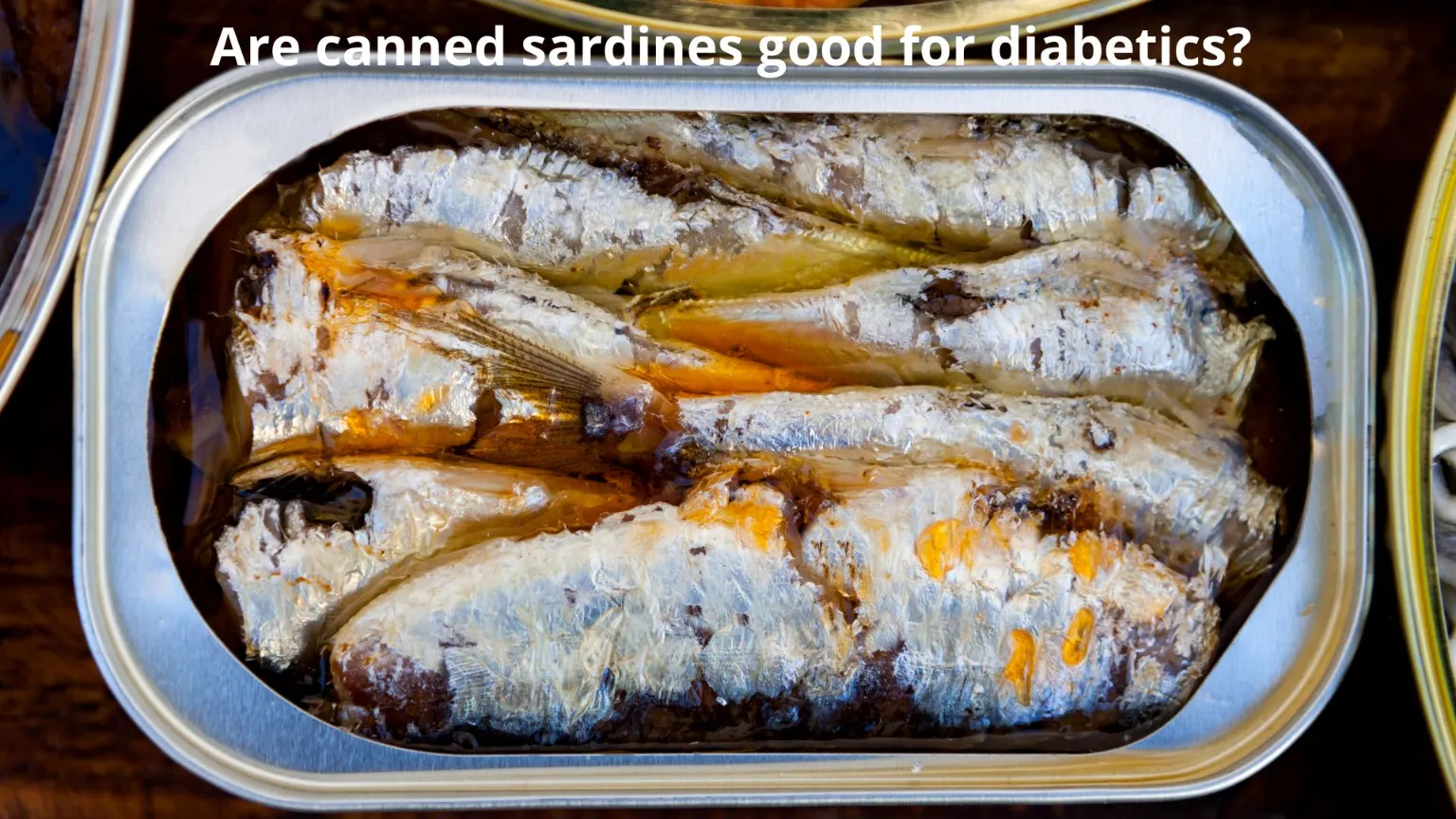Sardines in a Can: Are you diabetic and looking for a healthy protein source for your diet? Look no further than sardines and sardine meal, a nutrient-rich fish often overlooked in favor of more popular options like salmon or tuna. Sardines are not only delicious and versatile, but they also offer a variety of health benefits for diabetic patients.
When discussing budget-friendly and nutrient-dense pantry staples, few items compete with the mighty Sardines in a Can. These small, oily fish are revered by nutritionists for their incredibly high levels of Omega-3 fatty acids (EPA and DHA), essential for brain and heart health. They also offer a rare source of dietary Vitamin D and are loaded with calcium thanks to their soft, edible bones.
While Sardines in a Can set the gold standard for convenience and health, they are just one part of a robust canned fish selection. To diversify your diet and ensure you are maximizing variety, it’s smart to consider other low-mercury, high-protein canned options. Discovering alternatives to the excellent Sardines in a Can ensures your pantry is fully stocked with the best protein source the sea has to offer.
| Pros of Sardines in a Can | Cons of Sardines in a Can |
|---|---|
|
|
The Superfood Your Diabetic Meal Plan Needs
Sardines are a powerhouse of nutrition, making them an excellent addition to any diabetic meal plan. Sardines are low in carbs, high in omega-3s, and perfect for diabetic-friendly healthy dieting plans. Here’s why sardines should be a staple in your diet if you’re managing diabetes:
Rich in Omega-3 Fatty Acids – Sardines for Diabetics
Sardines for Diabetics: Sardines are packed with omega-3 fatty acids, which have numerous health benefits, particularly for individuals with diabetes. Omega-3s help reduce inflammation, improve heart health, and enhance insulin sensitivity. This can lead to better blood sugar control and a lower risk of cardiovascular complications, which are common among diabetics.
Low in Carbohydrates – Sardines for Diabetics
One of the main challenges for diabetics is managing carbohydrate intake to control blood sugar levels. Sardines are naturally low in carbohydrates, making them a perfect protein source that won’t cause a spike in blood sugar. Incorporating low-carb foods like sardines can help maintain stable glucose levels throughout the day.
Add Sardines to Your Healthy Nutrition Plan Today
Protein is essential for building and repairing tissues and plays a crucial role in blood sugar regulation. Sardines provide high-quality protein that can help keep you full and satisfied, reducing the likelihood of unhealthy snacking. A protein-rich diet can also aid in weight management, which is particularly important for diabetics.
Packed with Nutrients
Sardines contain essential nutrients, including vitamin D, calcium, and selenium. Vitamin D is crucial for bone health and immune function, while calcium supports strong bones and teeth. Selenium is a powerful antioxidant that helps protect cells from damage. These nutrients contribute to overall well-being and can help mitigate some of the health challenges associated with diabetes.
Easy to Incorporate into Meals
Sardines are versatile and easy to incorporate into a variety of dishes. Whether you enjoy them grilled, in salads, or mixed with vegetables, sardines can be a tasty and convenient addition to your meal plan. Their robust flavor enhances simple dishes, making healthy eating enjoyable and satisfying.
Incorporating sardines into your diabetic meal plan is a smart choice for anyone looking to improve their health and manage diabetes effectively. With their impressive nutrient profile and health benefits, sardines genuinely are a superfood that can support your journey to better health.
Sardines and Omega Fatty Acids: Why Your Body Thanks You
Sardines may be small, but they deliver powerful nutrition—especially when it comes to omega-3 fatty acids. These essential fats, which the body cannot produce on its own, are vital for overall health. Among the many benefits of sardines, their omega-3 content stands out for reducing inflammation, supporting brain health, and improving heart function.
Omega-3s: EPA & DHA Powerhouses
Sardines are rich in EPA and DHA, two types of omega-3s proven to:
- Reduce inflammation
- Support memory and mental clarity
- Improve cholesterol and lower blood pressure
- Decrease the risk of heart disease
Safer Seafood Choice
Unlike larger fish such as tuna or swordfish, sardines are low on the food chain, meaning they contain far less mercury. This makes them a cleaner, safer choice for frequent consumption.
Nutritional Profile Beyond Omega-3s
In addition to omega-3s, sardines benefits include being rich in vitamin D, calcium, selenium, protein, and vitamin B12. These nutrients contribute to:
- Strong bones and teeth
- A robust immune system
- Healthy muscles and efficient repair
Sardines for Diabetics
One of the most essential sardines benefits is their role in diabetes management. Sardines have a low glycemic index (GI), meaning they digest slowly and help regulate blood sugar levels. They also contain omega-3s that lower triglycerides, improve cholesterol, and reduce inflammation—a key factor in blood sugar control.
Studies show that people who consume omega-3-rich fish, such as sardines, salmon, or mackerel, at least twice a week have significantly lower cholesterol levels and a reduced risk of cardiovascular disease. Sardines are particularly valuable for diabetics, as they support blood sugar stability while protecting heart health.
Sardines and Blood Pressure
Research published in the Journal of Nutrition found that omega-3 fatty acids can significantly reduce systolic blood pressure in adults with prehypertension or stage 1 hypertension. For those with diabetes—a condition often linked to cardiovascular risks—Sardines for Diabetics provide dual benefits: blood sugar support and heart protection.
Fat Loss, Satiety & Potassium
Another surprising benefit of sardines is their role in weight management. Packed with protein and omega-3s, they keep you fuller for longer, helping to reduce cravings. Sardines also provide potassium, which helps regulate fluid balance, nerve function, and muscle contraction, while also lowering the risk of kidney stones.
Sardines for Weight Loss? Absolutely — Here’s Why
Sardines are among the most underrated superfoods for healthy, sustainable weight loss. These small fish are packed with protein, which helps promote satiety, reduce cravings, and support muscle maintenance—key factors for anyone trying to shed pounds.
In addition to their protein content, sardines are rich in omega-3 fatty acids, which have been shown to help reduce inflammation, support metabolism, and even improve insulin sensitivity. This makes them especially helpful for those on low-carb or anti-inflammatory diets.
Sardines are also low in calories, carb-free, and loaded with nutrients like vitamin D, calcium, and B12, making them a wise choice for nutrient-dense eating. Plus, they’re inexpensive, shelf-stable, and incredibly versatile—perfect for quick meals or snacks.
If you’re following a high-protein diet for weight loss or just looking for clean, nourishing foods, sardines deserve a spot on your plate.
| Fish Type | Omega-3 Fatty Acids | Protein (per 100g) | Mercury Level | Calcium Content | Disease Risk Factors / Health Benefits |
|---|---|---|---|---|---|
| Sardines | High (EPA & DHA) | ~25g | Low | Very High (bones included) | – Supports heart & brain health – Anti-inflammatory – Excellent for bone health – Safe for frequent consumption |
| Anchovies | High (slightly less than sardines) | ~29g | Low | High (if bones included) | – Good for heart health – Anti-inflammatory – Strong umami flavor, but often high in sodium (watch for hypertension) |
| Swordfish | Moderate-High | ~20g | Very High (not recommended for children/pregnant women) | Low | – Rich in protein & selenium – Risk: High mercury content can affect nervous system & heart health |
| Tuna | Moderate (varies by species) | ~23-25g | Moderate-High (especially albacore) | Low | – High in protein & selenium – Risk: Mercury exposure – Canned versions may have high sodium |
Healthy Canned Fish
Here are some excellent, healthy fish that are commonly available canned, similar to Sardines in a Can:
Canned Salmon:
Why it’s Great: A powerhouse of Omega-3s (EPA and DHA), especially if you choose wild-caught Sockeye or Pink salmon, canned salmon often includes the soft, edible bones, which provide a massive boost of calcium—something you don’t typically get from other protein sources.
Canned Mackerel:
Why it’s Great: Mackerel is small, fast-growing, and sustainable, with a flavor profile often described as richer than tuna but milder than sardines. Like Sardines in a Can, mackerel is very high in Omega-3s and low in mercury.
Canned Anchovies:
Why it’s Great: While often used as a flavoring or seasoning, anchovies are incredibly nutrient-dense. They are usually packed in oil or salt, so look for varieties packed in olive oil and rinse them before consuming. They are tiny fish, meaning their mercury content is negligible, and they are loaded with Omega-3s and Vitamin D.
Canned Light Tuna:
Why it’s Great: Light tuna (like skipjack) tends to be smaller than albacore, making it a lower-mercury choice. It’s affordable, widely available, and a fantastic source of protein. Just be sure to check how it’s packed (water is generally lower in fat than oil).
Share this:
- Click to share on Facebook (Opens in new window) Facebook
- Click to share on Pinterest (Opens in new window) Pinterest
- Click to share on LinkedIn (Opens in new window) LinkedIn
- Click to share on X (Opens in new window) X
- Click to share on Tumblr (Opens in new window) Tumblr
- Click to share on Bluesky (Opens in new window) Bluesky


I remember sardines but have not eaten it in a long time.
Give them a chance and tell me after
I have read your article carefully and I agree with you very much. This has provided a great help for my thesis writing, and I will seriously improve it
Enhance Mental Health with Sardines! The omega-3 fatty acids in sardines have been linked to improved mood and reduced risk of depression, making them a valuable addition to your diabetes management plan.
Fish like salmon, tuna, and mackerel are rich in omega-3 fatty acids, which can help reduce inflammation, support weight loss goals, and improve insulin sensitivity. Make a delicious and nutritious choice for your health!
For those with diabetes, choosing fish ,like sardines, as a protein option can be a smart choice. The omega-3 fatty acids in fish have been shown to improve insulin sensitivity and reduce inflammation, both of which are important factors in managing diabetes.
Thanks for sharing. I read many of your blog posts, cool, your blog is very good.